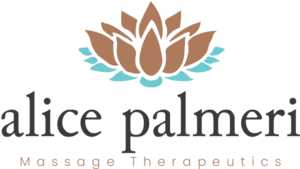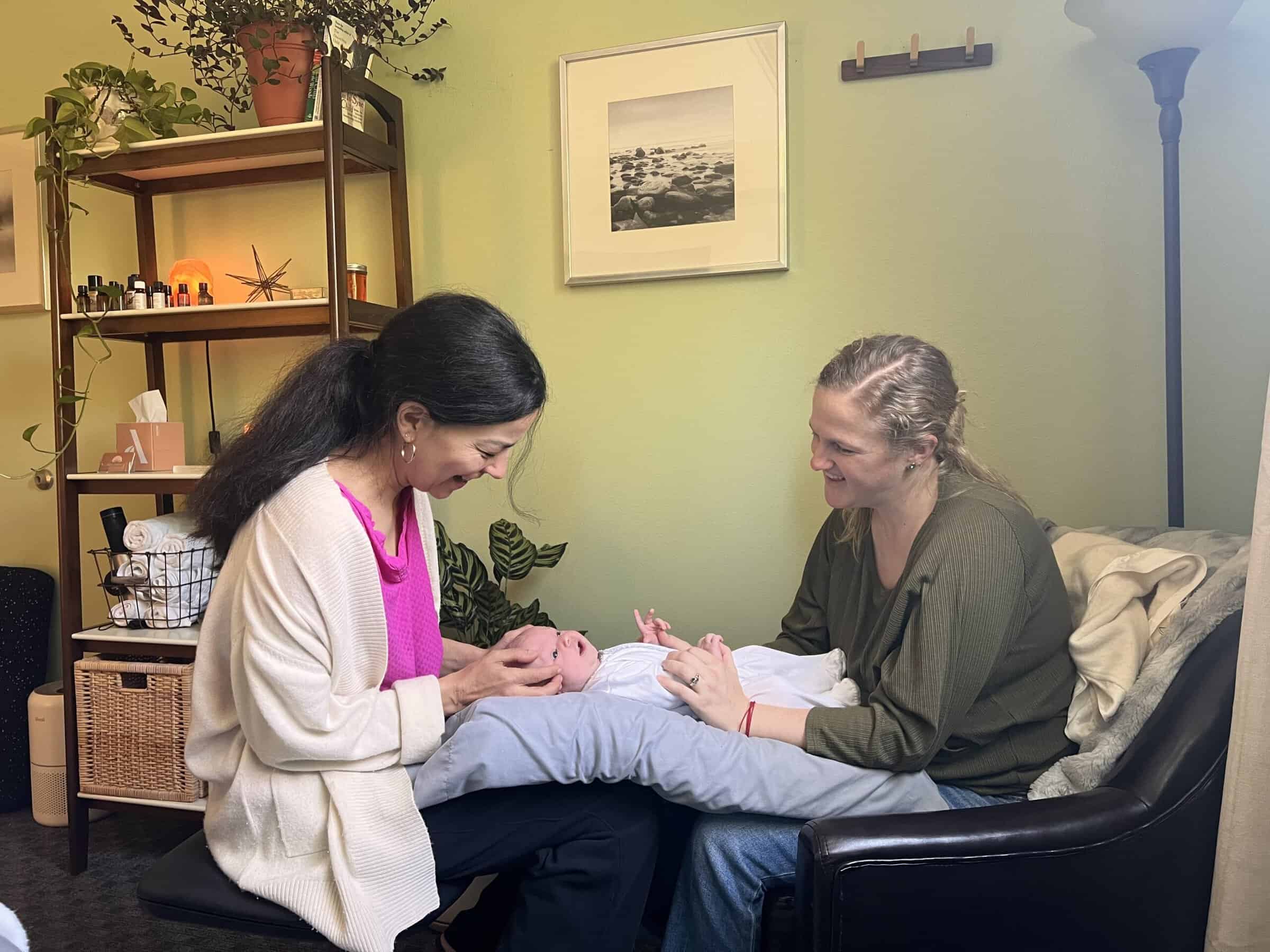Here are the 5 reasons your baby may need cranialsacral therapy. Craniosacral therapy (CST) can help babies with with many concerns such as tongue ties, latch issues, colic, and sleep concerns. This unique therapy has become very popular lately and there’s a good reason, because it’s very gentle and works.
But what is craniosacral therapy and how do i know if my baby needs it? Craniosacral therapy is a specialized form of massage therapy that can influence the gentle movement of bones and fascia that support the nervous system. These therapists focus their work on the spine, skull, cranial sutures, and the sacrum. CST involves a very light touch on the part of the massage therapist, who is trained to exert pressure no greater than five grams, the weight a penny. This light touch makes the practice ideal for babies and newborns.
There are many reasons your baby may need craniosacral therapy. Here are five common signs a newborn may benefit from a CST session. .
1. Feeding and Latching Issues
Breastfeeding doesn’t come easy for many newborns. Mother and child often need to practice to perfect this essential feeding skill. There can be many limiting factors. Some babies may not yet be able to fully open their mouths due to a tongue-tie. Other babies may clamp their jaws too tightly, or may not yet have enough strength to move their heads, meaning they can only turn their head to feed on one side.
Craniosacral therapy helps babies relax their muscles and release tensions that are hindering full mobility in their neck, head, or jaw. After therapy, babies are often able to move with greater freedom and may be able to successfully latch. Craniosacral therapy thus helps babies and moms feed, grow, and bond.
2. Colic
Colic is a common problem for newborns and infants which peaks around 6 weeks of age and then declines dramatically around three or four months. It can result in endless hours of crying and many sleepless nights for parents. This crying appears to be for no apparent reason and often dissipates into extreme fussiness.
Colic can impact healthy babies who are otherwise developing along a normal path.. Nevertheless, it is clear that a colicky baby is hurting and could use some relief so they can relax and sleep. Often, babies will cease crying once they have passed gas or had a bowel movement. Gentle CST is effective in aiding nervous system impulses in the digestive system.
Craniosacral therapy has been proven effective in addressing colic. Scientific studies have shown that CST reduces the number of crying hours and colic severity, while increasing total sleep time for baby and parent. Parents who are suffering along with a colicky baby should seek help from a craniosacral therapist.
3. Traumatic Delivery
Childbirth is a true miracle. However, it is not without significant risks. During delivery, babies can withstand varying degrees of trauma. Since their cranial bones are still developing, their cranial bones may get a bit misaligned. This may sounds drastic and scary, but it’s very common and can easily and gently be addressed by a craniosacral therapist. CST for newborns can help ensure that the child is on track for maximum health.
Babies may have also been situated in an odd position in utero. Their poor positioning may have resulted in a slight discomfort of their spine or sacrum. Consider what happens when adults cultivate a habit of poor posture. This can result in discomfort and even long-term health concerns. The same could be true of a newborn. Craniosacral therapy for babies can help gently align their bodies, thus allowing proper nervous system function. CST may also improve digestion, ease or end colic, and ensure that a child’s growth is optimized.
Please note that CST practitioners apply very gentle pressure. Babies are in terrific hands and the treatments are subtle, though effective. Many babies often fall asleep or smile during their treatments.
4. Torticollis
Torticollis is another reason your baby needs craniosacral therapy. It’s a common condition where a baby’s head will lean to one side. In fact, the word torticollis comes from Latin, meaning twisted neck. Often, this postural issue begins in utero. At first, parents may find their child’s tilted head cute, but it will soon be evident that their range of motion is hindered by tight muscles. While this may be alarming to many parents, the solution is as simple as easing tense muscles and can be done by a CST practioner.
The first three months of life are the best time to address torticollis. After that point, an infant’s muscles develop and strengthen to a point where they may be more resistant to release. Given that torticollis often interferes with breastfeeding, most parents will seek assistance so that their child can easily feed from both sides. This is just one of the reasons your baby may need cranialsacral therapy
To solve a case of torticollis, parents should seek out a massage therapist who specializes in infant care, especially one with extensive training in craniosacral therapy. Their gentle touch and caring manner will help babies feel at ease during treatments. With a few sessions, they can surely help a baby’s neck muscles relax and allow a full range of motion.
5. Excessive Fussiness
When a baby is uncomfortable, they get fussy. Most often, parents simply need to change a diaper or feed their baby. However, sometimes babies are inconsolable, restless, and irritable. Even if they are not having a full colicky episode, the excessive fussiness can be distressing for parent and child alike. Craniosacral therapy is known to help with excessive fussiness. The gentle releases involved in CST help babies relax and unwind. As a result, many underlying issues such as constipation or excess gas are resolved.
Sources
https://www.integrativehealthcare.org/mt/what-exactly-is-cranial-sacral-therapy/
https://my.clevelandclinic.org/health/treatments/17677-craniosacral-therapy
https://www.cranialtherapycentre.com/craniosacral-therapy-for-infants-a-newborns/
https://www.mayoclinic.org/diseases-conditions/colic/symptoms-causes/syc-20371074
https://pubmed.ncbi.nlm.nih.gov/31780018/
https://health.clevelandclinic.org/torticollis-how-parents-can-help-correct-a-babys-head-tilt



